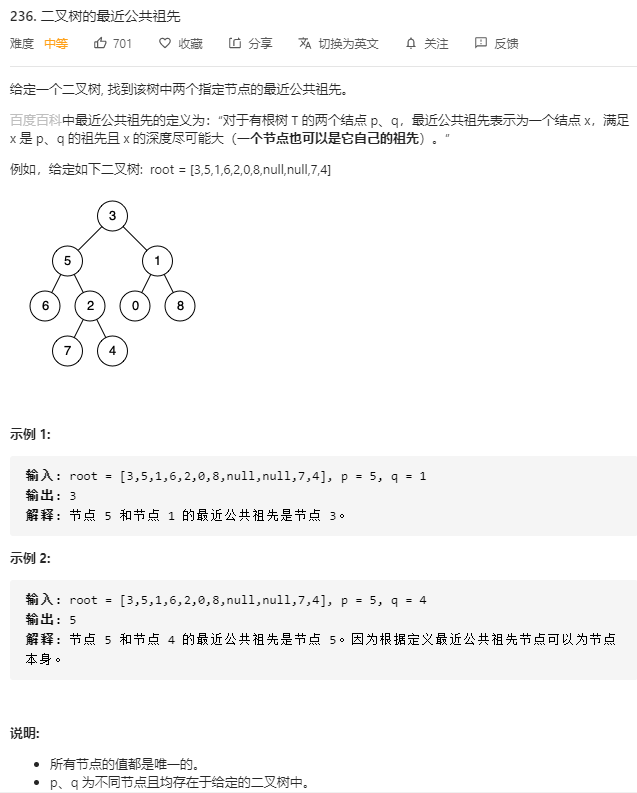
对情况进行分类:
(1)如果root为空,则返回NULL;
(2)如果p和q其中之一为root,则这个节点就是最近公共祖先,返回root;
其他情况下,p和q有可能都在root的左子树、都在root的右子树、或者左右子树各一个;
(3)递归计算lowestCommonAncestor(root -> left, p, q)和lowestCommonAncestor(root -> right, p, q),在root的
左右子树中分别寻找p,q的公共祖先,如果找不到,返回的结果是NULL。
如果左子树找不到,则返回右子树中的查找结果,右子树找不到就返回左子树的查找结果,都找不到,就是p和q左右各一个,返回root。
/**
* Definition for a binary tree node.
* struct TreeNode {
* int val;
* TreeNode *left;
* TreeNode *right;
* TreeNode(int x) : val(x), left(NULL), right(NULL) {}
* };
*/
class Solution {
public:
TreeNode* lowestCommonAncestor(TreeNode* root, TreeNode* p, TreeNode* q) {
if(root == NULL || p == root || q == root) {
return root;
}
TreeNode* L = lowestCommonAncestor(root -> left, p, q);
TreeNode* R = lowestCommonAncestor(root -> right, p, q);
if(L == NULL) {
return R;
}
if(R == NULL) {
return L;
}
return root;
}
};